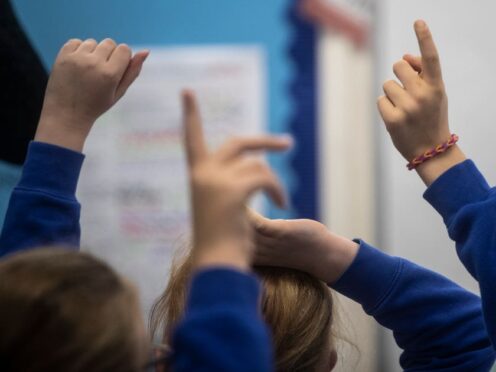More than two in three senior leaders in schools have had to cut back on teaching assistants this year, a survey suggests.
Nearly half (46%) of senior leaders said their schools have had to cut back on support staff while 32% said teaching staff had been cut, according to a poll for the Sutton Trust charity.
The proportion of senior leaders reporting that schools are cutting back on trips and outings (50%) and sports and other extracurricular activities (27%) is the highest level since the Sutton Trust began publishing polling in 2017.
The survey by the National Foundation for Educational Research (NFER) of 1,282 state school teachers and senior leaders in England suggests primary schools are being hit hardest by funding pressures.
Half of senior leaders in primary schools said pupil premium funding – which is extra funding provided to schools to support disadvantaged pupils – was being used to plug gaps elsewhere in their school’s budget, compared with 32% of senior leaders in secondary schools.
The online poll, which surveyed 398 senior leaders and 884 classroom teachers in March, suggests nearly three in four (74%) senior leaders in primary schools have cut back on teaching assistants (TAs), compared with 41% of senior leaders in secondary schools.
Overall, 69% of senior leaders said they have had to cut back on TAs for financial reasons.
More than half of senior leaders in primary schools reported cuts to IT equipment (53%) and trips and outings (53%), while 29% reported cuts in sports and extracurricular activities.
The Sutton Trust is calling for a new national strategy to close the attainment gap.
Sir Peter Lampl, founder of the Sutton Trust, said: “The erosion of schools funding coupled with rising costs is having a major impact on the ability of schools to provide the support that low-income students need.
“It’s disgraceful that increasing numbers of school leaders are having to cut essential staff and essential co-curricular activities.
“The situation for primary schools in particular is one of rapid deterioration, with half of them having to use funding to plug gaps that should be used for poorer pupils.”
He added: “The Government’s rhetoric on education being a priority is a sham. School funding is inadequate and has to be urgently reviewed.”
A population bulge that began in the early 2000s in England has been moving from primary schools into secondary schools in recent years.
A report by think tank the Education Policy Institute (EPI) last week warned that falling pupil numbers could force some schools to close.
Pepe Di’Iasio, general secretary of the Association of School and College Leaders (ASCL), said: “School and college leaders are facing an increasingly desperate financial position and are having to make impossible decisions over where to make cuts.
“Reducing teaching assistants means less support for children with additional needs; reducing teachers means larger classes and cuts to the curriculum.
“Primary schools are hit hardest because their per-pupil funding rates are so low and many are also seeing falling rolls because of a reduction in the number of primary-age children.
“Small primary schools are often on the brink of being financially unsustainable.”
Patrick Roach, general secretary of the NASUWT, said: “That so many schools are being forced to cut numbers of teachers, teaching assistants and other essential staff is a mark of shame for this Government and its hollow pledges to care about the standard of education in this country and the futures of its young people.
“Schools are already cutting back on extracurricular activities, school trips and cultural and social activities. In many cases IT facilities are being cut and school buildings are crumbling.”
A Department for Education spokesperson said: “We are increasing school funding to £60.7 billion this year, the highest level ever in real terms per pupil, to support school leaders meet their costs.
“Every school will attract a per pupil increase in funding, and the National Funding Formula (NFF) makes sure that funding is distributed fairly based on the needs of each school and their pupils. School leaders have flexibility in how they choose to use their pupil premium to best support disadvantaged pupils and close attainment gaps.
“Pupil premium funding is rising to over £2.9 billion in 2024-25, meaning that rates will have increased by 10% since 2021-22 to 2024-25.”
